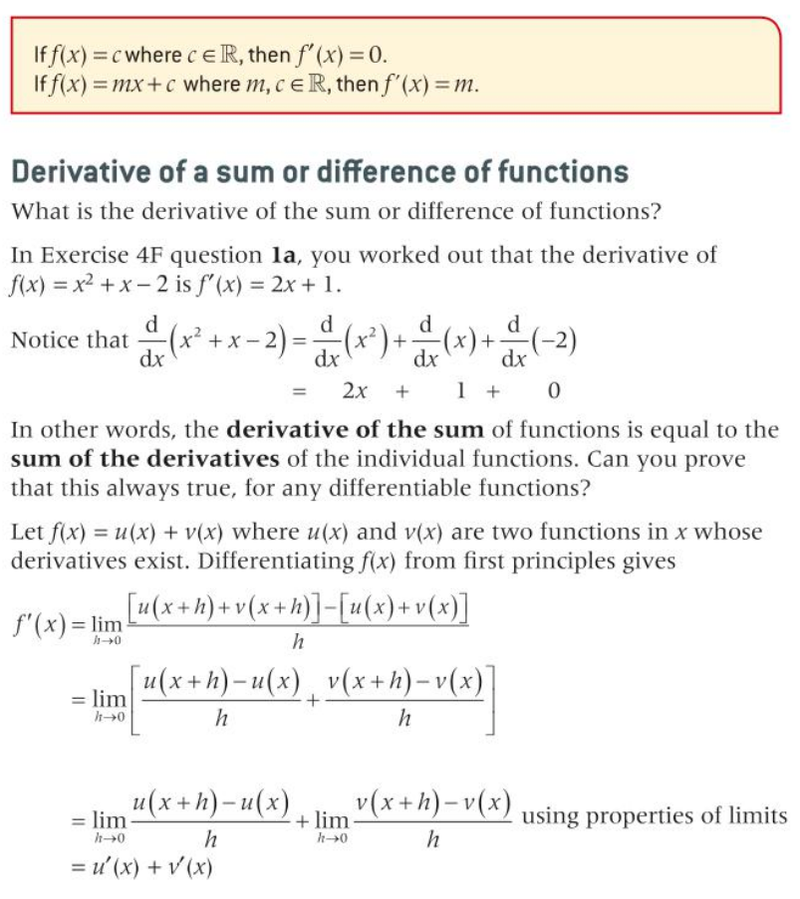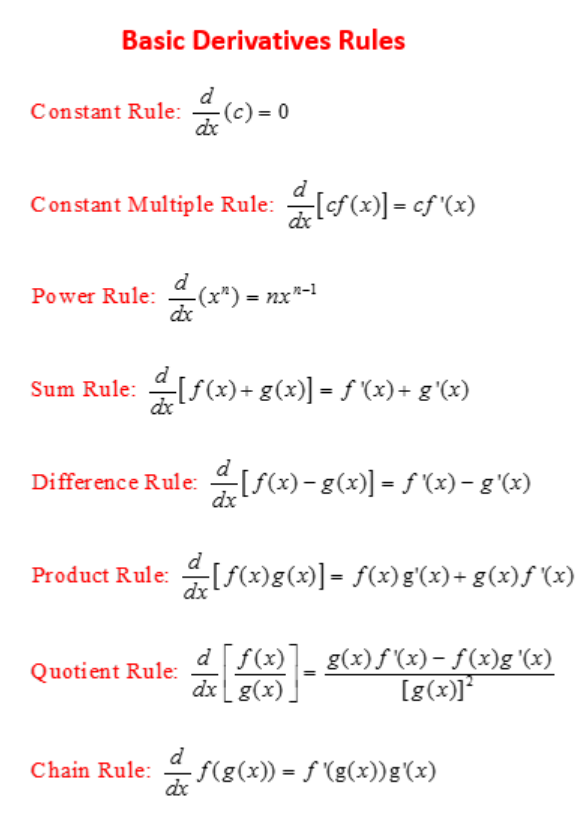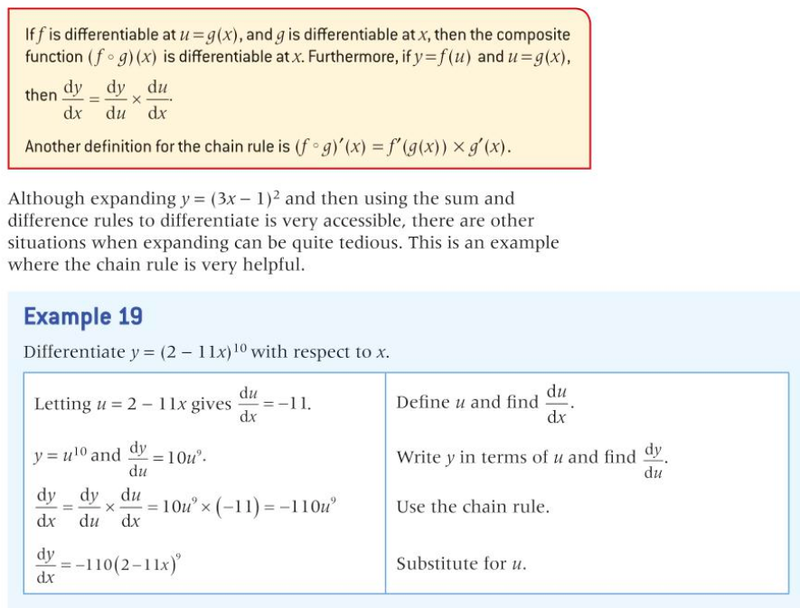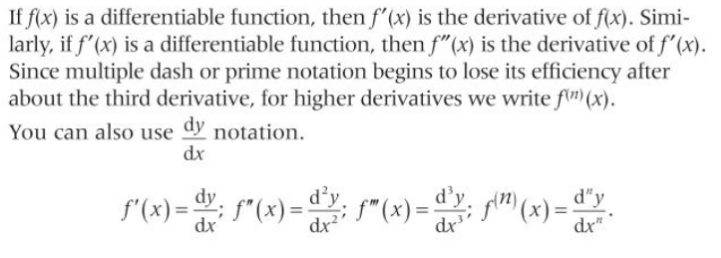Finding Derivatives

- It helps to think of derivatives as "removing" powers.
- For example, the derivative of x² is 2x. You subtract 1 from the exponent and move down 2.
- If you have x³ for example, then its derivative is 3x². The 3 moves down and now only 2 is left.
- This applies to all values in a derivative. For example, x derives into 1, because x is equal to x¹, its derivative becomes 1*x⁰, and x⁰ = 1.
- For values that don't have x, for example 3, you can imagine them as 3x⁰, as x⁰ = 1, it would be equal to 3. However, when taking the derivative, we bring down zero, so it becomes 0*3x⁻¹ = 0.

- This rule can extend to negative powers of x!
Derivative Rules

- The product rule is used when you're taking a derivative of two functions multiplied by each other and the quotient rule is used when taking a derivative of two functions divided by each other.
- The chain rule is used for compound functions.

Higher Derivatives
- Derivatives are nice and all, but why stop at just one?
- You can take derivatives of derivatives too!
- These are called the second derivative, third derivative and so on.

Sources